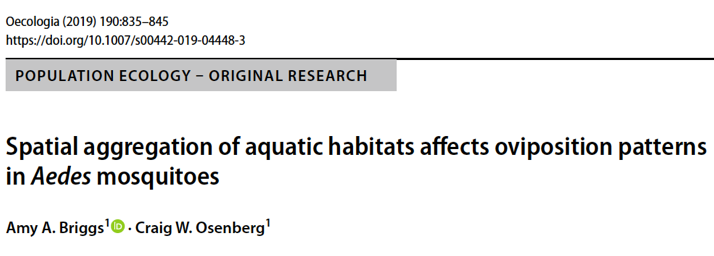
Abstract. Colonization, including oviposition, is an important driver of population and community dynamics both within and across habitat patches. Most research has focused on the roles of habitat availability or quality on colonization and its outcomes. However, the spatial distribution of habitats also likely affects these processes. We conducted field experiments in Georgia, USA, using clustered and dispersed arrays of equal numbers of oviposition patches to investigate how patch aggregation influenced oviposition by Aedes mosquitoes. We tested the effects of aggregation on: (1) the total number of eggs an array received, (2) the proportion of patches within an array that received eggs, and (3) the number of eggs per colonized patch. We compared results to predictions from three models (Field of Dreams, Propagule Redirection, and Excess Attraction), which vary in the degree to which arrays attract colonists and apportion those colonists among patches. Clustered arrays received 22% more eggs than dispersed arrays, with clustered patches significantly more likely to receive eggs. At the species level, A. albopictus responded more to clustering than did A. triseriatus. These results are inconsistent with Propagule Redirection, but support the Excess Attraction and Field of Dreams models. Although clustered arrays occupied a relatively small area, they attracted at least as many ovipositing mosquitoes as did dispersed arrays. However, the number of eggs per colonized patch did not differ between clustered and dispersed arrays. Therefore, density dependence among larvae, and hence the production of adult mosquitoes on a per-patch basis, should be similar in dispersed and clustered landscapes.